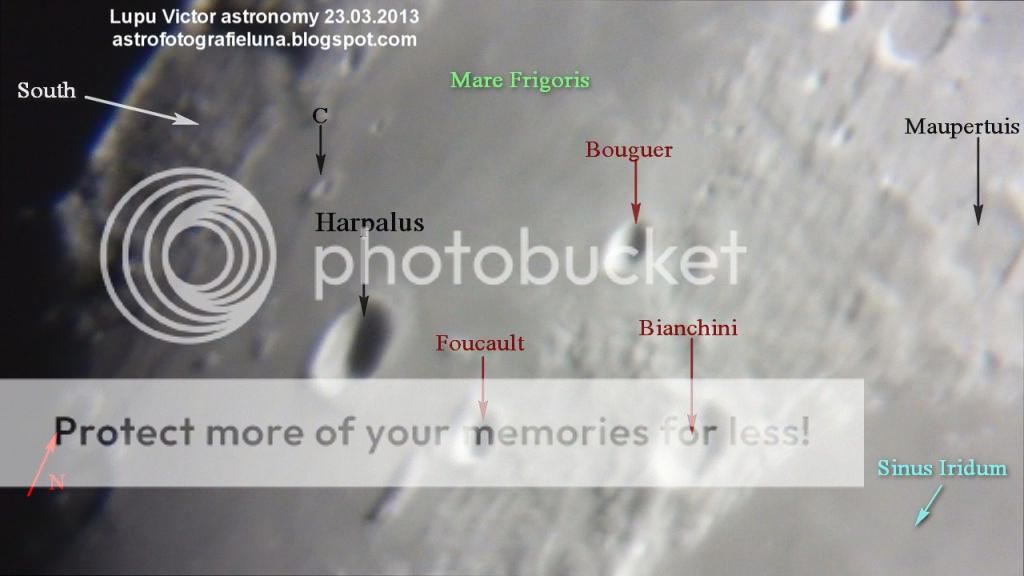In the images we see a part of the Mare Frigoris on the bottom of the pictures, large craters as J. Herschel (156 km), Pythagoras and South, and small craters which are looking like pearls. The majority are satellite craters.
South crater (104 km), is a vague memory of an impact that formed it. Only its northern rim remained visible. On its floor are scattered very small craters.
J. Herschel is similar to South but has no walls missing, although it shows that had greatly suffered.
One of the craters that I love to watch on the northern Moon is Pythagoras, for its oval shape as seen from Earth because it is located on the edge of the lunar disk, but also for interior terraces and peaks in its center, features that make it a special crater when seen through an astronomical telescope.
In the picture below are labeled craters and other lunar features in the region. To better understand this photo, you should note that the label with the name or the letter of larger craters could be found at their center, and on the small craters, you should find them around them, usually above.
Magnitude: -12.03
Phase: 70.5% (0% = new, 100% = full)
Distance: 398.311 km
Sidereal Period: 27.32 days
Illuminated: 92.2%
Optics: Celestron C8-Newtonian astronomical telescope
Eyepiece: Plossl 20mm, 2x Barlow
Mount: CG5 (EQ5)
Camera: Sony CX130
Filter: no
Date: 14/03/2014
Location: Baia Mare, Romania
Processing: FastStone Image Viewer










 Thursday, November 05, 2015
Thursday, November 05, 2015
 Unknown
Unknown































